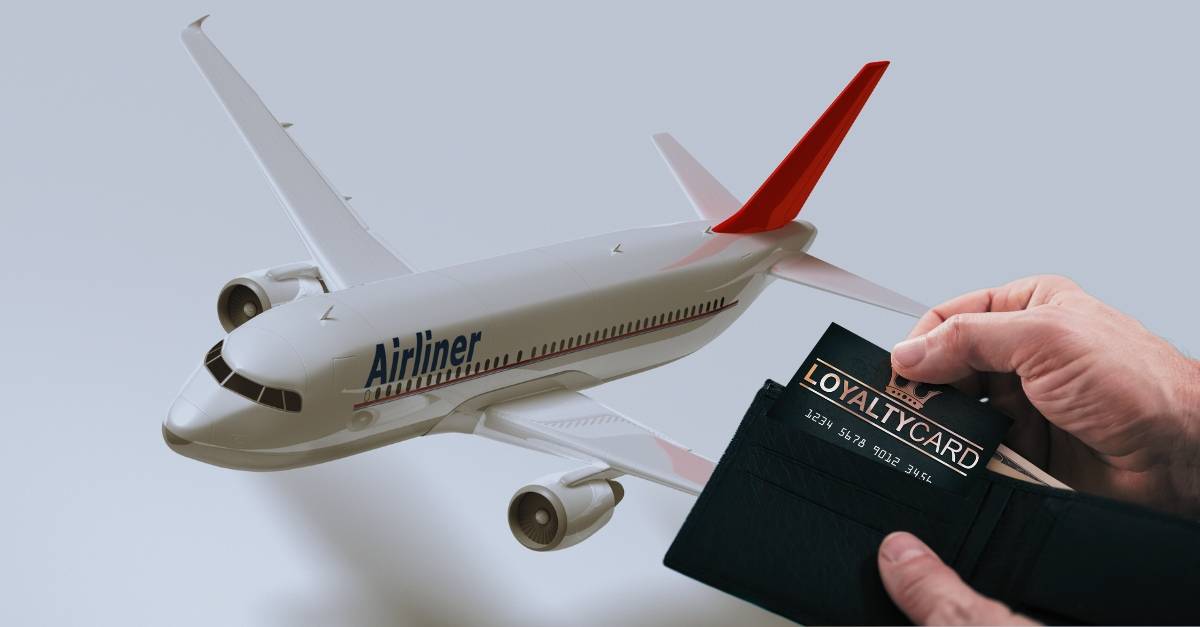


Since American Airlines pioneered the first successful customer loyalty program in 1981, the airline industry has undergone a significant transformation. Loyalty programs, once focused purely on frequent flyer rewards, have evolved into complex ecosystems that drive customer retention, engagement, and profitability.
At the heart of airline loyalty management are miles or points programs. These programs reward passengers with points based on miles flown or money spent redeemable for benefits such as free flights, seat upgrades or exclusive lounge access. This simple yet effective system encourages repeat business while enhancing overall passenger satisfaction by offering tangible rewards.
A significant advancement in loyalty programs is the introduction of branded payment cards. Airlines partner with financial institutions to offer co-branded credit cards, such as the American Express Flying Blue card or the Aeroplan credit card. These cards provide customers with additional ways to earn miles through everyday purchases, effectively turning miles into a form of currency.
Loyalty programs are not just about retaining customers; they are also significant revenue generators for airlines. One of the key ways airlines profit from these programs is by reselling loyalty points to partners. This strategy has become a major revenue stream, with airlines earning substantial amounts from selling points to credit card companies, hotels, car rental agencies, and other partners.
For instance, the Flying Blue loyalty program, shared by Air France and KLM, boasts 22 million members, 13 million of whom were active over a 36-month period. The program has been presented as having a “direct contribution to EBIT” of 15%, showcasing how deeply intertwined loyalty programs can be with overall airline profitability (Source: 2024 CarTrawler Yearbook of Ancillary Revenue).
Read more to learn how airlines make money from frequent flyer programs.
Airlines use the wealth of data from loyalty programs to create personalized experiences. By segmenting customers into frequent flyers, leisure travelers, and occasional flyers, airlines can offer tailored promotions that speak to each group’s specific needs.
– For frequent flyers, perks such as expedited check-in and lounge access are crucial.
– While leisure travelers might appreciate special vacation packages.
– Occasional flyers are often enticed with bonus miles or promotions for their next trip, ensuring all segments feel valued.
In-Flight Entertainment (IFE) and WiFi-enabled IFE are becoming essential tools for airlines to engage customers and drive loyalty. With passengers’ attention divided across various platforms before they even board, the flight becomes a unique window for brands to deliver personalized content and services.
LoyaltyPlus, a leading customer loyalty solutions provider, underscores the pivotal role of IFE and WiFi-enabled IFE in retaining passenger attention amidst a myriad of distractions. “The period passengers spend inside the aircraft, where IFE and WiFi-enabled IFEC are central, offers a unique opportunity for airlines to capture their full attention. By offering personalized entertainment options and seamless connectivity, airlines can engage passengers in a more meaningful way,” Loyalty Plus explains. This helps airlines build brand affinity and a lasting relationship with travelers.
Meanwhile, Customer Inspire echoes this view, highlighting the long-term economic viability of wireless IFE solutions. “A standalone wireless inflight entertainment solution, whether wired or WiFied, can be designed to be economically viable in the long-term through an intelligent Onboard Passenger Management ecosystem,” says Customer Inspire. Integrating loyalty and catering management systems with IFE allows airlines to deliver personalized offerings, turning data into meaningful engagement opportunities.
Personalizing the in-flight experience is critical to maintaining customer loyalty. “LoyaltyPlus helps clients leverage IFE and WiFi-enabled IFE to create highly personalized experiences for loyalty program members,” the company notes.
By integrating real-time loyalty programs into IFE systems, airlines can deliver tailored offers, services, and entertainment that resonate with each passenger. Predictive analytics and tier-based engagement strategies allow airlines to target passengers with relevant content and promotions.
Customer Inspire also sees immense potential in harnessing inflight behavior data. “Pax interaction with IFE content and Sales on Board is a crucial data point airlines are missing today. This can be positioned as a valuable differentiator for loyalty programs,” they emphasize.
By combining in-flight content consumption data with backend systems, airlines can offer content recommendations and payment options personalized to each passenger’s preferences.
The future of IFE is ripe with innovation. LoyaltyPlus foresees the development of in-flight e-commerce marketplaces, augmented and virtual reality (AR/VR) entertainment, and gamification to drive deeper engagement. “Omnichannel engagement across pre-flight, in-flight, and post-flight environments will allow airlines to connect with passengers in new and immersive ways,” they explain. Additionally, real-time customer relationship management (CRM) systems and AI-driven virtual assistants will elevate personalization efforts.
Similarly, Customer Inspire points to the growing use of AI in customer segmentation and personalized recommendations. “By adding past inflight content consumption and other onboard behavior data to the mix, airlines can push AI-driven content recommendations and on-board sales, enhancing passenger experience and satisfaction while generating revenue,” Customer Inspire shares.
IFE and WiFi-IFE are not just about enhancing customer experience; they offer tangible revenue opportunities. “NetzSky has the feature to allow inflight redemption for loyalty points, including cash+miles redemptions,” explains Customer Inspire. This creates a revenue-generating ecosystem for airlines, where passengers can redeem points for premium content or services, resulting in a win-win scenario for both the airline and its customers.
In an industry where competition for customer loyalty is fierce, airlines must continuously innovate to maintain and strengthen their relationships with passengers. Loyalty programs, when combined with advanced technology like IFE and WiFi-enabled IFE, have the potential to offer personalized, immersive experiences that resonate deeply with travelers.
As both LoyaltyPlus and Customer Inspire highlight, leveraging data-driven insights and omnichannel engagement strategies will be key to creating tailored experiences that enhance customer satisfaction and drive ancillary revenue.
As loyalty programs evolve, airlines that capitalize on these technological advancements will not only succeed in retaining customers but will also unlock new avenues for growth and profitability. In-flight entertainment, once a simple perk, is now a strategic tool for deepening customer loyalty, ensuring that airlines stay ahead in the ever-changing travel landscape. The future of loyalty management lies in personalization, seamless integration, and continuous engagement—both in the air and beyond.
TRAVELER’S MICRO-MOMENTS Home Capturing the Traveler's Micro-Moments 26 April 2022 microMoments, Technology, traveler Time Is No Longer Measured in Days,…
IFE TO THE RESCUE Home WHEN IFE COMES TO THE RESCUE OF FLIGHT ATTENDANTS! 25 June 2022 Digital Services, IFE,…
Digital AD: IVT-FREE Zone Home DIGITAL INFLIGHT ADVERTISING: AN IVT-FREE ZONE 20 May 2022 Advertising, IVTFREE, Technology In late 2015,…